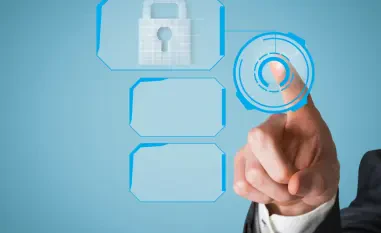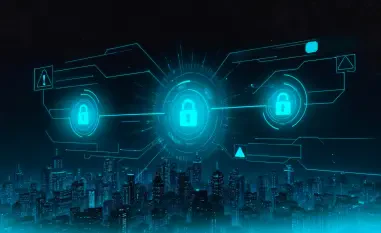As the digital landscape grows beyond imagination, a robust security architecture becomes vital to modern society. Threats are rapidly mutating alongside all the tech, and organizations must address them with diligence. Modern protections leverage the latest computing technologies and methods to tackle the growing complexity of these dangers. In this article, the author outlines the fundamental dynamics, advantages, and disadvantages to consider when planning defenses now and soon. This guideline is for businesses and IT professionals looking to enhance corporate security.
Zero Trust Architecture: The Cornerstone of Modern Security
The Zero Trust Architecture (ZTA) has become essential for safety across all industries, with a clear main objective: “Never trust, always verify.” This means no user or system should be automatically trusted. Each access request must undergo a thorough check and get approval to ensure the person’s identity is valid. For example, entities that protect cloud applications or important information use ZTA to authenticate and authorize anyone who tries to log in, whether they do it from outside or inside the organization.
AI and Machine Learning: The Future of Threat Detection
Artificial Intelligence (AI) and Machine Learning (ML) are quickly changing how firms identify risks and set up countermeasures. Real-time analysis of a large volume of data is also within the reach of these technologies, and the identification of abnormalities that may indicate a cyber incursion.
For instance, AI programs in a financial institution would look at transaction patterns and immediately identify something as abnormal or fraudulent. Risk assessment is an important process that, if left in the hands of humans, often leads to increased losses or breakdowns.
XDR: Unifying Security for Comprehensive Threat Response
Extended Detection and Response, or XDR, is a new breed of platform that is becoming increasingly popular. In the context of integrated solutions, it can equally target breaches in endpoint, network, and cloud domains. This method contrasts with the current conventional security tools that work independently but are focused on a more centralized approach that compiles data from various sources. Hence, XDR is capable of providing a comprehensive overview of an establishment.
For example, a healthcare delivery organization might utilize this technique to safeguard a patient’s information in its network, endpoints, and cloud. They could enhance the effectiveness of tackling infiltrations because once they are detected, XDR offers a better chance of comprehensively addressing them.
Tailored Protection for Offsite Environments
Since many corporations have transferred their services to digital storage, safeguarding those remote environments has become an important issue. Cloud-native security solutions are further aligned to address the bona fide intrusions arising from outsourcing.
For example, a tech company can use cloud-native risk management software to protect its applications and data as they evolve. There is a corresponding advantage where these tools are scalable, flexible, and have improved safety features as enterprises embrace virtual technologies.
Privacy-Enhancing Computation (PEC)
Privacy-enhancing computation (PEC) is increasingly helpful in the face of increased privacy concerns worldwide. PEC has innovative features, such as homomorphic encryption and secure multi-party computation, that enable collectives to work with data without divulging it. These methods increase privacy as helpful information can be obtained from these complex structures from sensitive information.
For instance, one of the most relevant cases is a research organization that deals with confidential patient records. It can use PEC to keep the subjects’ files private while using them for research purposes.
The Roles of Compliance and Automation in Security
That is why companies should follow laws like GDPR, CCPA, and HIPAA, as security standards and regulations continuously change. Following these regulations is essential, as their purpose is not only to comply with legal obligations but also to provide confidence to customers by keeping their documents a secret.
Furthermore, there is a growing tendency to use automation in some protective procedures to minimize human intervention and enhance effectiveness. Large enterprises have adapted threat detection, incident handling, and vulnerability management via machine control. This gives IT professionals more time to think higher up while automated systems handle the routine briskly.
Benefits of Modern Security Architecture
The integration of advanced and automated shields brings several key benefits:
Enhanced Threat Detection and Response: They improve malware detection and allow for faster identification of security breaches and generate more efficient responses.
Improved Risk Management and Compliance: Through compliance with these new regulations, organizations would be in a position to control risks and also steer clear of legal dangers while at the same time building the customer base.
Scalability and Flexibility: Cloud-native threat protection tools offer elasticity, meaning that as customers evolve and face new needs or risks, they do not have to rip and replace; instead, they can adapt.
Navigating Roadblocks
Despite the benefits, implementing modern safety infrastructure comes with its own set of challenges:
Integration Complexity: Integrating the next-generation protocols with other security systems can be a Herculean task. It requires every coordinated effort and thorough planning to avoid anything that can disrupt the operation.
Skill Shortages: Because these risks are constantly changing, firms need professionals with the right skills to handle them. However, there is a lack of experts who meet these job requirements.
Cost Considerations: The most effective solutions are complex and costly to install and maintain. To avoid overburdening the organization, an excellent defensive strategy must be measured against other operation cost factors for corporate and safety goals.
Enterprises facing challenges need to focus on continuous improvement and take steps to address new threats effectively. To ensure long-term resilience, it’s crucial to adopt the following strategies:
Continuously Improve
It is also apparent that the security architecture must accelerate to ground itself on emerging intrusion tactics. New technologies should be introduced, policies updated, and, most importantly, staff should scan these blueprints frequently to stay prepared.
Invest in Training
Given the nature of the dangers that companies face, they must invest capital in the training and certification of cybersecurity professionals to meet the complex challenges posed by contemporary perils.
Educate Users and Raise Awareness
Educating users, particularly employees, about guidelines and possible hazards can help mitigate risks caused by human mistakes and social engineering attacks.
Looking Ahead
Organizations need to adopt current security practices because new threats in information technology are constantly appearing. With Zero Trust and Artificial Intelligence at their disposal, companies now have powerful and practical means to improve vulnerability recognition times, increase compliance, and protect critical information. However, leaders also need to consider the risks of the adoption, skills gaps, and deployment costs. Therefore, by keeping up with risk mitigation trends, making proper investments, and ensuring that they embrace change, businesses are in a position to guard their valued assets and ensure they are well-secured in the current upsurge in the sophistication of threats.




